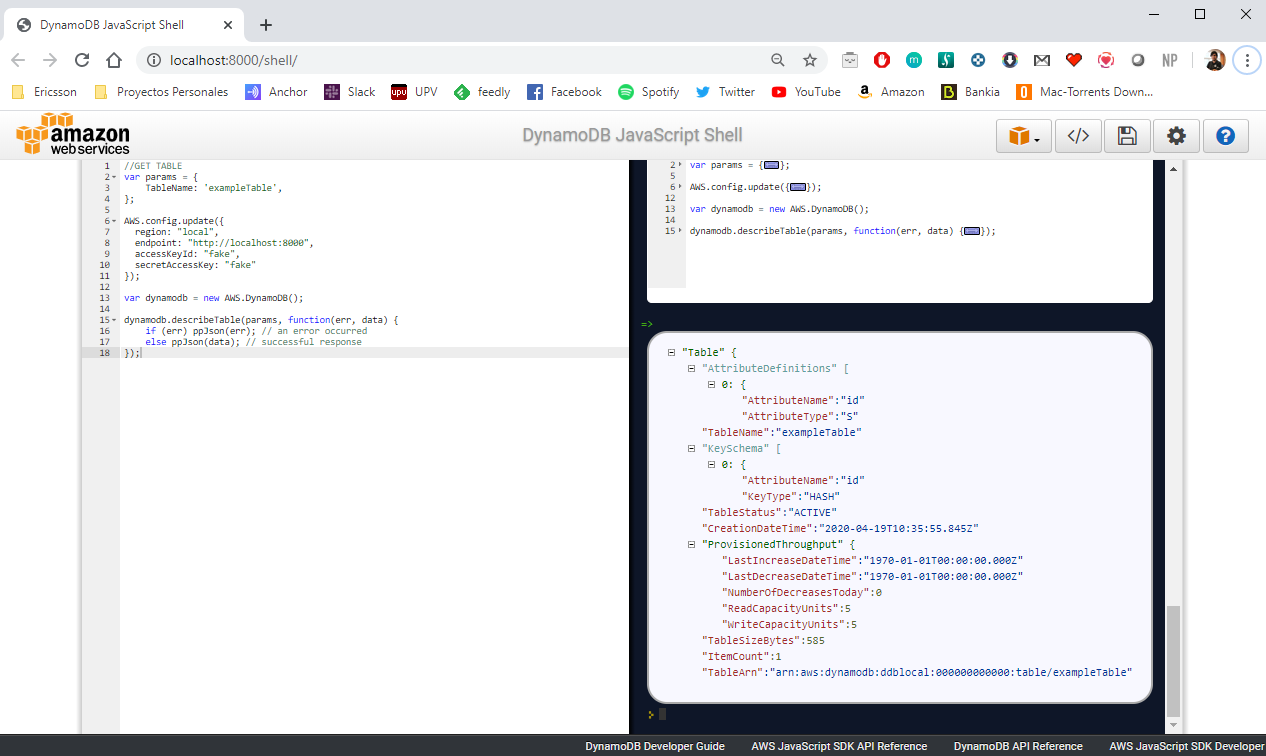

- #Local dynamodb javascript shell how to#
- #Local dynamodb javascript shell install#
- #Local dynamodb javascript shell code#
The first step is to create a table with a hash key. Create deployment package or deploy existing (previously built. The actions would be the same as described in the corresponding Java tutorial. Support builds locally and in Docker (with or without SSH agent support for private builds). dynamolocal Download the DynamoDB tar Best to do this on a fast. dynamolocal change into the new created directory cd. Create a hidden folder in your home directory mkdir.
#Local dynamodb javascript shell install#
Local DynamoDB provides us with a web user interface on The local DynamoDB shell is a JavaScript shell, therefore the actions for Node.js can be issued straight to the DynamoDB shell. DynamoDB Local makes use of Java so if you don’t have Java installed on your machine you will need to install Java on ubuntu desktop for development. Using local DynamoDB and Node.js is extremely handy for debugging. If you use Docker, you can find a local DynamoDB image, or you can create one on you own as described here. There was a previous post on local DynamoDB. Feel free to let us know if you want to publish a useful guides, improve the documentation (attributed to you, thank you!) that you feel will help the community.Before getting started, we need to have local DynamoDB installed since we want to avoid any costs for DynamoDB usage. Try to search for some native implementation of the dynamo API in your project language which will hold all the data in memory. In my current project I use a custom mock which is a simplified boto API implementation. After that, hit the shell script contained in the bin file to. Operations confirm to normal Java syntax and structure. DynamoDB and Java Use Java with DynamoDB by utilizing your Java development environment.
#Local dynamodb javascript shell code#
The code results display in the right pane.

A rough summary is: Download the tar file that contains all of the java jars located here.
#Local dynamodb javascript shell how to#
We love our contributors! If you'd like to contribute to the project, feel free to submit a PR. This link goes over the basics for how to install the local dynamoDB client. You must also specify -dbPath when you use this parameter. * Optimizes the underlying database tables before starting up DynamoDB on your computer.


 0 kommentar(er)
0 kommentar(er)
